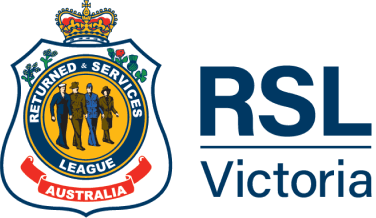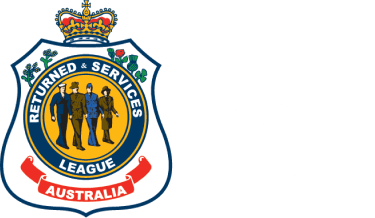Sometimes a simple act of kindness will lead to great things. This is certainly the case in the Mallee region in north west Victoria, where a series of books captures the oral histories of local residents.
The Mallee Living Histories began as an idea in 2018 when retired social worker, Vernon Knight AM, was asked to help an elderly lady publish her memoir. With a compelling story to tell of a life that included many years teaching in Africa, Vernon happily helped pen Monica’s memoir and organise its publication.
Around the time of the Royal Commission into Aged Care Quality and Safety, Vernon said he was reminded that: “[Asking a person] to share aspects of their life is one of the best ways to lift spirits and raise confidence”.
“Being in retirement, I thought it would be good to employ this approach with a view to addressing the isolation and loneliness of folk in aged care.”
Vernon connected with Mildura aged care provider Princes Court Homes in 2019, and with some monies raised and the recruitment of volunteer writers, Princes Court residents were asked if they would like to have their stories written.
This resulted in The Mallee Living Histories Book One, a compilation of 14 stories. Since then, another four books have been published with the most recent, Book 5, launched in December 2023. Book 6 is already underway.
Since its inception, 74 stories of Mallee residents have been shared. The Mallee Living Histories project now extends to five aged care facilities in the Mallee, while also reaching older individuals living independently in the community.
"While we continue to see the conversations as paramount, the written legacies augment the rich history of our region."
Vernon Knight AM
Old stories, timeless lessons
As Vernon explains, there is a lot to learn through storytelling, including when it comes to wartime experiences.
“Numerous stories detail the lives of those who served. They recount the young men who went away to war and the lives of those who had to manage without them.
“They tell of the challenges of coping through rationing and the plight of families whose men did not return. They talk of war widows who carried the burden of fatherless children and fruit properties that still had to be farmed.
“The wartime challenges cannot be ignored, but there are over-riding messages of resilience and determination.”
The Mallee Living Histories project is fully funded through sponsorships, including from the Mildura RSL Sub-Branch, which Vernon said is “one of our most supportive sponsors. This partnership was probably inevitable given the impact of the World Wars on those who have settled in north west Victoria and south west New South Wales”.
According to Mildura RSL Sub-Branch President Paul McDermott, capturing the stories of the veteran community has been an enlightening and inspiring project that he believes will keep these stories alive well into the future.
“Our returning veterans from later conflicts have also had a direct impact on the living history of the Mallee. It’s not just their stories, but what their contribution has meant for our community.”
Many of the stories published by The Mallee Living Histories project, and information on purchasing copies of the books, can be found at malleelivinghistories.com.au.
With the Mallee region contributing a significant number of personnel into wartime service, it is no coincidence that The Mallee Living Histories project has managed to capture the lives and experiences of some of The Mallee’s veteran community. Book 5 alone includes the stories of three veterans, two of whom are already centenarians, with the third not far behind them.
John Braidie
John Braidie, aged 101 years and known to everyone as Jack, tried enlisting in the Navy when he turned 18 years, but his parents wouldn’t give their consent.
He was instead called up by the Army.
Having worked in the Post Office prior to enlisting, Jack was posted to 3rd Division Signals, something that left Jack feeling “pretty niggly” as he’d trained with 29/46 Battalion and made a lot of good friends.
“I changed my mind when we reached New Guinea”, recalls Jack in his interview for the book. As the last surviving member of his unit, Jack said of his time in the war, “Living in a tent for four and a half years with a group of blokes teaches you to accept and respect people for what they are, for we are all different.
“I didn’t agree with all my mates, but I knew if I was in trouble, they would be there to assist me. In short, they were family.”
Jean Gray
Jean Gray, also aged 101, had to remain silent about her war service for 50 years after the end of World War II, sworn to secrecy due to the sensitive nature of her work in intelligence.
In The Mallee Living Histories, Jean McDonald, as she was then known, was “keen to enlist and do her bit” by 1942. Hoping to eventually train as a nurse, Jean joined the Australian Women’s Army Service after seeing an ad in the local newspaper.
Jean would eventually be recruited to the Australian Special Wireless Group (ASWG), where she was tasked with monitoring allied wireless traffic and intercepting enemy wireless transmissions.
Trained in both English and Japanese morse codes, Jean was sent to Brisbane, where she monitored allied radio transmissions. She was also responsible for making sure Defence operations were not compromised and allied positions not disclosed.
It wasn’t until 1995 that Jean received a letter of thanks from then-British Prime Minister Gordon Brown, which included a medal and certificate acknowledging her service. It was then that Jean was finally permitted to speak of her service.
John Cutler
After completing his training, John served as part of the ground crew of the 22nd Repair and Salvage unit at Bairnsdale, not only maintaining vehicles, but also providing safe transport for servicemen as well as retrieving crashed aircraft and transporting the salvaged aircraft to Tocumwal.
John also served in New Guinea with the No. 6 Wireless Unit, where he served alongside American servicemen. In his memoir, he recalls, “the Americans wouldn’t go anywhere without an Australian unit with them”. He later served in the Philippines.
Not only is John a regular at the Mildura RSL Sub-Branch but, according to Sub-Branch General Manager Kim Archibald, John is “one of the most highly respected members of the club”.
Verna Farnsworth
The Mallee Living Histories project records not only veteran stories, but also stories of the families at home during wartime.
At the age of 100, Verna Farnsworth still clearly recalls her family’s experiences of World War II.
Not only did she have two brothers, Cec and Ab Driscoll, serving overseas, but the man she would marry, Mick Farnsworth, was also away in the war.
“It was a very worrying time, especially for our Mum,” recalls Verna. “Cec was in New Guinea... and I used to worry about Ab because he wasn’t a very good letter writer and you’d be anxious because you hadn’t heard from him. He was in Borneo.”
Verna went from being a sister worrying about brothers in World War II to being a mum worrying about a son during the Vietnam War.
“It wasn’t very good, but it wasn’t anything you could do anything about.”

